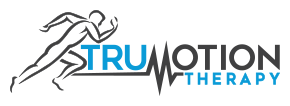April 8th, 2020
Tennis elbow, also known as lateral epicondylitis, is characterized by pain on the outside portion of the elbow. Although it’s common in tennis players, anyone can get tennis elbow especially people who use their hands a lot, i.e. golfers, rock climbers, handymen (and women), etc. It’s essentially tendinitis that’s caused by overuse. The tendon in question is the one on the thumb side of your elbow called the common extensor tendon. There will frequently be a pinpoint spot of tenderness at the tip of the tendon.
What Causes It?
A couple things can lead to the development of tennis elbow. As mentioned above overuse is a big one. If you’re an athlete, big spikes in training volume or intensity will predispose you to overuse injuries. Commonly, people don’t train much in the winter months, then spring comes along and they start training for competing several days per week at a high intensity. If you don’t ease your way back into activity your muscles and tendons won’t have time to adapt.
Big spikes in activity don’t have to be from athletics alone. If you spend the weekend re-painting the bedrooms in your house you’ll be putting different stresses on the muscles around the shoulder and elbow than you’re used to. It’s these big shifts in activity we need to be mindful of.
The second thing that can lead to overuse injuries like tennis elbow is poor mechanics. The way you swing a tennis racket, or perform any task for that matter, is important. Poor mechanics, or bad form, can cause you to over-stress certain areas of the body, which can lead to injury. It’s important to have a good sports chiropractor or physical therapist analyze your technique. If you’re in Charlotte we would love to assist you with this.
There are other factors that can contribute to tennis elbow and delay healing. We call these micro-stressors, because they typically won’t cause the injury, but they will continue to “pick the scab” if not addressed. These include:
- Workplace posture. Using a mouse and typing a lot can stress the wrist and elbow, so ensuring your workspace is ergonomically correct is important.
- Picking up your kids. I’m certainly not advocating child abandonment, but be mindful as you pick up your kids throughout the day. Keeping your elbows close to your body when lifting gives you a better mechanical advantage.
- Sleep posture. Sleeping on your side with your hand under your pillow puts the elbow in a bent position and can compress the extensor tendon. We should avoid tendon compression when injured because it can increase sensitivity. Try sleeping with your arm straight.
- Heavy purses and handbags. If you’re in the habit of carrying your purse or handbag on the injured side, try switching to the other side until your elbow recovers.
What Treatments are Available?
Traditional treatment approaches involve supportive bands or sleeves, NSAIDs, corticosteroid injections, physical therapy, and rarely surgery.
The current body of evidence recommends modifying the activity that irritates the tendon and gradually strengthening the tendon. Medications can be used to manage flare-ups, and injections or surgery should be an absolute last resort once a fair attempt at strengthening has been tried.
Our Approach to Treating Tennis Elbow:
Many tennis players in Charlotte have found tennis elbow relief through chiropractic, manual therapy, and corrective exercise here at TruMotion Therapy. Since each person is unique, an individual approach is taken with each patient. Listed below is our general approach at providing tennis elbow relief.
- Put out the fire aka reduce pain.  We do this with cold laser, acupuncture/dry needling, soft tissue work, kinesiology tape, and/or joint mobilizations.
- Fix what caused the fire:
a. Strengthen the tendon. Tendon pain happens because the strength of the tendon cannot match the stress being put on it. This is why the “rest and wait” method does not work.
b. Improve mechanics. This will be different for everyone. Areas that can affect the elbow are the hips, core, shoulder, neck, and wrist. Below is a video we use to help address shoulder mechanics. - Modify activity. Rarely do we have to tell someone to completely stop what they’re doing. There is a sweet spot between complete rest and going all-out where recovery can happen and you can continue doing what you love. We work together to find that sweet spot.
If you live in or around the Charlotte area and are experiencing tennis elbow or elbow pain that doesn’t seem to get better, click here to work with our team and begin finding relief.





